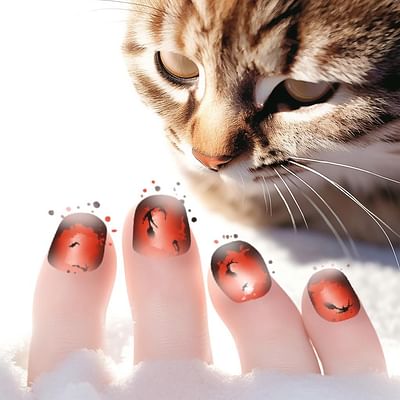🐾 Understanding Cat Declawing Quiz 🐾
Understanding Cat Declawing
Test your knowledge about the process and effects of declawing on cats.
Understanding Cat Declawing
Cat declawing is a controversial topic in the world of feline care. It is important for cat owners to be well-informed about the process and effects of declawing before making any decisions. Let's test your knowledge on this subject.
Question 1: What does the process of declawing a cat involve?
- Removing the cat's nails
- Trimming the cat's nails
- Removing the top layer of the cat's paws
- Removing the bone from which the nail grows
Correct Answer: Removing the bone from which the nail grows.
Declawing actually involves the removal of the bone from which the nail grows. It is a surgical procedure that is performed under anesthesia. The bone is removed to prevent the nail from regrowing. This procedure is not a simple nail trim; it is a more invasive and permanent solution.
Question 2: What are some common behavior changes in declawed cats?
Correct Answer: Both A and B.
Declawed cats often show increased aggression and may avoid using the litter box. The removal of their claws can cause them to feel more vulnerable and anxious, leading to defensive behaviors such as aggression. Additionally, the pain and discomfort associated with declawing may make them reluctant to use the litter box.
Question 3: What are some long-term effects of declawing on a cat's physical health?
Correct Answer: Both A and B.
Declawing can lead to arthritis and back pain in cats. The removal of the bone and associated structures can alter the cat's gait and balance, putting additional stress on their joints and spine. Over time, this can lead to chronic pain and discomfort, affecting their overall physical health.
It is important to note that declawing is considered inhumane and unnecessary by many veterinarians and animal welfare organizations. There are alternative options available to prevent scratching, such as regular nail trims, providing appropriate scratching posts, and using deterrents. These alternatives allow cats to exhibit their natural behaviors without causing harm or discomfort.
As responsible cat owners, it is our duty to prioritize the well-being and welfare of our feline friends. By understanding the process and effects of declawing, we can make informed decisions that promote the health and happiness of our cats.
Remember, it is always best to consult with a veterinarian before making any decisions regarding your cat's health and well-being. They can provide guidance and recommend alternative solutions that are both effective and humane.
Cat Mutt is here to provide you with valuable information and resources to help you provide the best care for your cat. From behavior tips to health advice, we cover it all. Stay tuned for more informative content to enhance your understanding of your feline friend.


